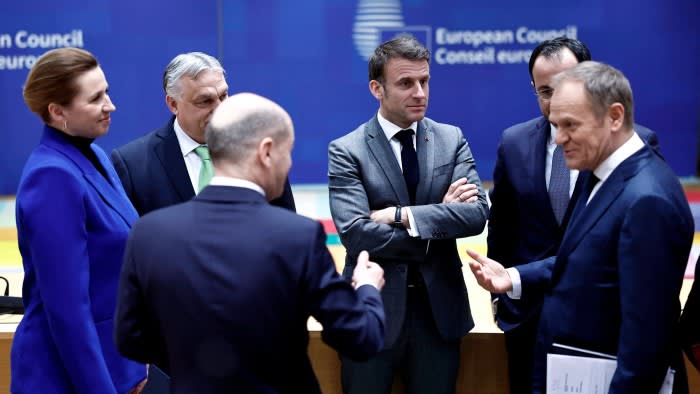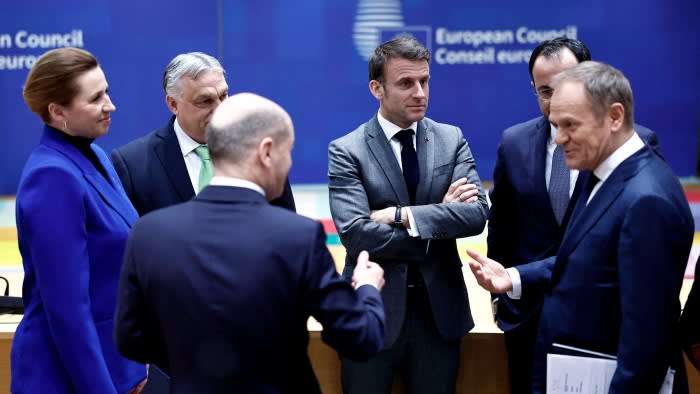
Unlock the Editor’s Digest for free
Roula Khalaf, Editor of the FT, selects her favourite stories in this weekly newsletter.
Within the overall misery of eurozone stagnation — the bloc’s economy has flatlined since the autumn of 2022 — there are glimpses of good news. The fact that southern Europe has kept up a decent growth pace while the northern core has been slipping is getting well-deserved, if still insufficient, attention.
It was about time too. In Europe’s integrated economy, poorer countries should be steadily catching up with richer ones. Economic convergence was one of the big promises of both the single market and the common currency. Yet after 2009, ill-conceived policy responses to debt crises caused divergence rather than convergence for southern Europe (although not, fortunately, for eastern member states). The combined size of Italy, Spain, Portugal and Greece’s economies is today exactly the same, relative to Germany’s, as at the euro’s birth in 1999.
The importance of the return of convergence cannot be overstated: it underpins EU member states’ sense of a common destiny, without which political cohesion is impossible. It is from this perspective that we must see the extraordinary decision in 2020 to create a pandemic recovery fund through which EU states would borrow in common to support investments disproportionately in poorer members.
It was the threat of fatal divergence that made Germany accept the “eurobonds” and “transfer union” that had long been anathema for Berlin. Poorer EU nations, it was feared, would not be able to match Germany’s deep-pocketed Covid subsidies to its companies. The resulting advantage for German exporters would undermine faith in the single market itself.
Similarly, the convergence we are now seeing must to a large extent be attributed precisely to the recovery fund, which has relieved pressure on poorer countries’ public finances, promised support for productive investments and incentivised long-needed reforms.
How leaders judge the experience with the recovery fund is going to loom over a lot of big political decisions to be made in the EU in the next few years. So what are the lessons to be taken on board?
First, that the bold decision four years ago has paid off. For all the instances of alleged waste and fraud, the recovery fund has worked as intended. The bigger recipients of the funds have seen the higher growth rates, which have restarted — at least for now — the economic convergence both the single market and the single currency promised. Sustaining this is a prerequisite for Europe as a whole to strengthen its performance as both a political and economic actor.
The second lesson is that while the original motivation for the recovery fund may have disappeared along with Covid and its barrage of furlough and business support schemes, something very much like the original argument looks set to stay. The political determination to decarbonise, digitise and defend Europe’s economies will require stronger public incentives for business investment. While there are many dumb ways of doing subsidy policy, the dumbest is not to have any subsidy policy at all, and there is a real risk that the richer and bigger countries will again spend more than others can match.
So long as poorer countries feel outspent in the subsidy race, the political sustainability of the single market is at risk. That is, after all, why the EU has a world-class subsidy control system. But like it or not, we live in a world where more of our political goals and challenges are ones that markets on their own are not able to meet, no matter how competitive and level the playing field is. The need for greater public spending on investment is increasingly clear — the question is whether it will be national or common spending.
Third, the recovery fund has proved that it is possible to do things differently, and better. While it was the first large-scale transfer to poorer member countries funded by borrowing, it was not the first such transfer at all. There have long been “cohesion funds” which direct funds to the least economically developed regions of the EU, and which make up one-third or so of the bloc’s budget.
Some of the largest net contributors to the EU budget are discreetly suggesting the recovery fund’s model of strict and specific “milestones”, which need to be achieved for promised funds to be paid out, is a better way to govern transfers between EU countries. The European Commission has reportedly drawn up plans for making cohesion funding more performance-based.
So don’t heed the denials that either cohesion funding could change or the recovery fund be renewed or expanded. As the EU approaches its next seven-year budget cycle, there is more to play for than in a very long time.
Read More: World News | Entertainment News | Celeb News
FT









